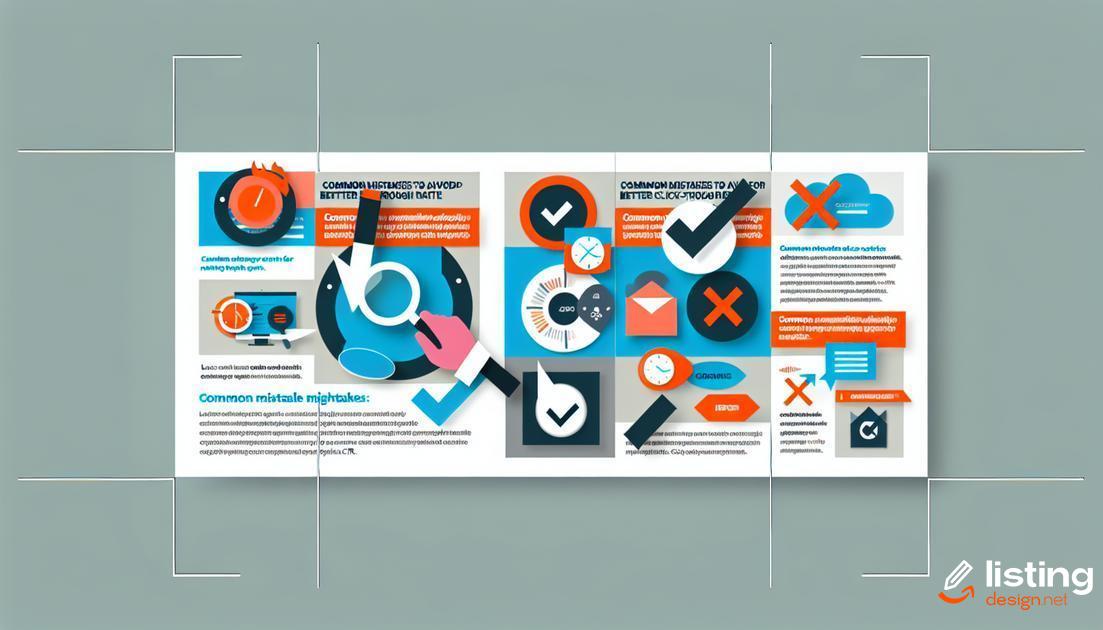Amazon click through rate (CTR) is a critical metric in e-commerce. It reflects how often your product listings are clicked on in search results. A higher CTR means more customers are noticing and interested in your products. In this post, we’ll explore various strategies to improve your Amazon CTR, such as optimizing product titles, images, and descriptions. By addressing these key areas, you can significantly drive more traffic to your listings and boost your overall sales.
Table of Contents
Understanding Click Through Rate (CTR)
Click Through Rate (CTR) is a crucial metric in determining the success of your products on Amazon. At its core, CTR measures the percentage of users who click on your product listing after seeing it in search results. A higher CTR indicates that your listing is compelling and relevant to potential customers.
Several elements influence CTR on Amazon. Among the most significant are product title, images, bullet points, customer reviews, and pricing strategies. Optimizing these facets can dramatically improve your CTR, consequently increasing your sales.
Product Title
Your product title should be clear, concise, and include relevant keywords. A well-crafted title not only aids in search ranking but also persuades users to click on your listing.
Product Images
High-quality images grab attention and give potential buyers a better understanding of your product. Show your product from multiple angles and include lifestyle photos when possible.
Bullet Points
Use bullet points to highlight key features and benefits of your product. Make them concise and easy to read, emphasizing what sets your product apart from the competition.
Customer Reviews
Positive reviews build trust and can significantly enhance your CTR. Encourage satisfied customers to leave reviews and address any negative feedback promptly to maintain a favorable rating.
Pricing Strategies
Competitive pricing can make a significant difference in CTR. Ensure that your prices are attractive compared to similar products while maintaining a balance between cost and value.
By focusing on these specific areas, you can effectively improve your listing’s CTR and potentially boost your sales on Amazon.
Importance of Amazon CTR

Amazon Click Through Rate (CTR) plays a crucial role in determining the success of your product listings. A higher CTR signifies that more users are clicking on your product when they see it in search results, which often translates to higher sales.
One primary reason CTR is essential on Amazon is that it directly affects your product’s ranking in search results. Amazon’s A9 algorithm takes into account the CTR when determining the relevance and placement of product listings. Higher CTR means better ranking, leading to increased visibility and potentially more sales.
Moreover, understanding and improving your CTR provides valuable insights into customer behavior. It helps identify what’s working in your product listings and what needs optimization. For instance, if a product with a catchy title and high-quality image gets more clicks, replicating this approach across other listings can boost overall performance.
Another significant aspect of CTR is its impact on advertising campaigns. In sponsored product ads, a higher CTR indicates that your ads are resonating well with the audience, leading to better ad placements and lower cost-per-click rates. This ultimately results in a more cost-effective advertising strategy.
Additionally, monitoring CTR helps you stay ahead of the competition. By analyzing competitors’ listings with high CTRs, you can glean best practices and adapt them to improve your products’ appeal.
Regularly measure and analyze your CTR data to pinpoint trends and make data-driven decisions. Use this information to tweak your product titles, images, descriptions, and other elements to enhance their attractiveness to potential buyers.
In conclusion, focusing on improving Amazon CTR is a strategic move to boost your sales and overall market presence on the platform.
Factors Influencing CTR on Amazon
Various factors significantly influence Click Through Rate (CTR) on Amazon, and understanding them can help optimize listings effectively. One primary factor is product title optimization. Your product title should be clear, concise, and include relevant keywords to capture potential buyers’ attention. Avoid keyword stuffing, as this can be counterproductive.
Another crucial element is product images. High-quality images that showcase the product from multiple angles can enhance visual appeal and make the listing more attractive. It’s important to follow Amazon’s guidelines regarding image quality and formats.
Customer reviews also play a pivotal role. Positive reviews can build trust and credibility, encouraging more clicks. Actively managing and responding to reviews demonstrates that you value customer feedback and are committed to providing excellent service.
Effective use of bullet points in the product description highlights key features and benefits, making the information easily scannable. Ensure each bullet point is concise and relevant, emphasizing aspects that differentiate your product from competitors.
Additionally, pricing strategies should not be overlooked. Competitive pricing can make your product more appealing. Utilizing tools to monitor competitors’ prices and making adjustments accordingly can help maintain an edge in the marketplace.
Lastly, consider enhancing the product description. A well-crafted description provides comprehensive information, aligning with customer expectations and addressing common questions. Focus on readability and format, using paragraphs, headings, and bold text to improve clarity.
Optimizing Product Titles for CTR

When it comes to improving your product’s click-through rate (CTR) on Amazon, the product title plays a crucial role. A well-optimized title not only grabs attention but also provides key information at a glance, nudging potential customers to click through to your product page.
Length Matters: Amazon has specific guidelines on the ideal length of product titles. Keeping your title within 150-200 characters ensures that it is fully visible in search results, improving visibility and clickability.
Include Relevant Keywords: Incorporate primary keywords that shoppers are likely to use when searching for your product. This not only enhances visibility but also assures customers that your product matches their search intent.
Brand Recognition: Starting your product title with your brand name can build trust and make your product stand out, especially if your brand is well-known or has positive recognition.
Be Descriptive and Specific: Include essential details such as size, color, material, and quantity. These specifics help customers make informed decisions quickly, increasing the likelihood of a click-through.
Avoid Keyword Stuffing: Although keywords are important, overloading your title with them can make it look spammy and unprofessional. Focus on creating a clear and concise title that reads naturally.
Utilize Symbols Judiciously: Using symbols like pipes (|) or hyphens (-) can help separate different elements of your title, making it more readable. However, don’t overdo it, as too many symbols can clutter the title.
Remember, an optimized product title is the gateway to higher CTR on Amazon. By combining these strategies, you can craft a compelling title that entices customers to click through and explore your product further.
The Role of Product Images in CTR
Product images play a critical role in driving Click Through Rate (CTR) on Amazon. High-quality images can attract potential customers, providing them with a clear view of what they’re purchasing. Use multiple images from different angles and include zoom functionality. This allows customers to inspect the product closely, which builds trust and increases the likelihood of a click.
Invest in professional photography to ensure your product is presented in the best light. Add lifestyle images to show the product in use and infographics that highlight key features. These techniques can make your listing stand out among competitors.
Avoid cluttered backgrounds and focus on the product itself. The first image, or the main thumbnail, is especially crucial since it is the first thing customers see. Use plain white backgrounds for these images to comply with Amazon’s requirements and to maintain a clean, professional look.
Additionally, ensure that your images load quickly and are not too large in file size to improve page load times. Fast-loading images contribute to a better user experience, which can positively affect your CTR.
Enhancing CTR with Bullet Points

Using bullet points in your Amazon product listings can significantly improve your Click Through Rate (CTR). Bullet points help in breaking down information into easily digestible pieces, making it simpler for customers to understand the key benefits and features of your product.
Highlight Key Features: Focus on the most important and appealing aspects of your product. Mention unique features that set it apart from competitors.
Address Customer Pain Points: Solve common problems that customers might be facing. Use bullet points to provide quick solutions and benefits.
Be Concise and Clear: Keep bullet points short and to the point. Avoid long sentences and complex jargon. This increases readability and ensures your message is easily understood.
Use Relevant Keywords: Incorporate keywords that your target audience is likely to use in their search queries. This can also help in improving your product’s visibility on Amazon.
Focus on Benefits: Emphasize the practical benefits of your product rather than just listing technical specifications. This approach resonates better with potential customers.
By effectively utilizing bullet points, you can create a more engaging and informative product listing that encourages potential buyers to click and learn more, ultimately boosting your CTR and sales.
Using Customer Reviews to Improve CTR
Leverage Positive Reviews
Customer reviews offer genuine insights into your product, building trust and credibility. Highlighting positive reviews can significantly improve your CTR as potential customers tend to consider feedback from other buyers. Ensure these reviews are visible and easy to read.
Use Visual Testimonials
Images and videos from satisfied customers can make your product stand out. Visual content is more engaging and helps build a connection with prospective buyers, increasing the likelihood they will click on your product.
Respond to Reviews
Engage with customers by responding to their reviews, whether positive or negative. This demonstrates your commitment to customer satisfaction and helps build a positive brand image. When potential buyers see active engagement, they are more likely to trust your product and click on it.
Highlight Unique Selling Points
Use snippets from reviews that mention unique benefits or features of your product. Potential buyers are more likely to click on listings that clearly communicate the advantages of the product.
Request Detailed Reviews
Encourage satisfied customers to leave detailed reviews covering various aspects of the product. Detailed reviews provide more information to potential buyers and can address any queries they might have, making them more likely to click on your listing.
Utilize Ratings
Displaying average ratings prominently can catch the eye of potential customers. Higher ratings generally lead to increased trust and higher CTR.
Pricing Strategies to Boost CTR

Competitive Pricing: One of the most effective pricing strategies is staying competitive. Regularly monitor your competitors’ prices and adjust yours accordingly. Amazon shoppers are always looking for the best deal, and competitive pricing can significantly boost your CTR. Discounts and Deals: Offering discounts and deals can be a powerful driver of clicks. Highlight special offers, seasonal discounts, or limited-time deals to entice customers. Implementing promotions such as ‘Buy One, Get One Free’ or providing discount codes can also capture attention. Dynamic Pricing: Using dynamic pricing tools can help you stay competitive by automatically adjusting prices based on market demand, competitors’ prices, and inventory levels. This ensures that your products are always priced optimally, increasing the likelihood of customer clicks. Value-Based Pricing: Make sure to communicate the value customers are getting for the price. If your product offers something unique or superior quality, justify the higher price point. Use bullet points to highlight unique features, benefits, and any guarantees or warranties offered. Psychological Pricing: Employ psychological pricing techniques such as pricing items just below a round number (e.g., $19.99 instead of $20.00). This approach can make the price seem lower and more appealing to shoppers.
Price Matching:
Implement a price matching policy if possible. Let potential customers know that you offer the lowest price by matching competitors’ prices. This not only builds trust but also encourages clicks from those who are comparing prices across different sellers.
Subscription Pricing:
For consumable goods, offer subscription pricing options. Highlight the cost savings and convenience of subscribing, which can improve your CTR as customers see long-term value.
Creating Compelling Product Descriptions
Writing effective product descriptions is crucial for increasing your Amazon CTR. Start by highlighting the key features of your product, ensuring that these features are both relevant and beneficial to the customer. Avoid lengthy paragraphs; instead, break down information into short, digestible sentences that maintain the reader’s interest.
Incorporate powerful, action-oriented language to persuade potential buyers. Words like “discover”, “experience”, and “unleash” can create a sense of excitement around your product. Ensure each description addresses common customer pain points and explains how your product solves these issues, enhancing its appeal.
Adding specific details about materials, sizes, and usage instructions can build credibility and provide all the necessary information a customer might be looking for, which can significantly improve your CTR. Additionally, including keywords naturally throughout the description can help improve your product’s visibility in Amazon’s search results, leading to higher click-through rates.
A/B Testing for CTR Optimization

A/B Testing, also known as split testing, is a powerful tool for enhancing your CTR on Amazon. By comparing two versions of a product listing, you can determine which one performs better. This process involves changing one element at a time and analyzing the impact on CTR. For instance, you can experiment with different headlines, images, or descriptions to see which version attracts more clicks.
Set clear goals: Before starting an A/B test, determine what you want to achieve. Are you aiming to increase clicks on your main image, or perhaps improve the engagement with your bullet points? Clear goals will help you measure success accurately.
Choose the right elements to test: Focus on elements that have the most impact on your listing. Key areas to consider include titles, images, bullet points, and customer reviews. Changing one variable at a time ensures that you can attribute any changes in CTR directly to the tested element.
When conducting A/B tests, ensure that you gather sufficient data to make informed decisions. Short testing periods may not provide a clear picture. Instead, run tests for at least two weeks to capture meaningful data. While running tests, avoid making other changes to your listing that could affect the results.
Analyze results rigorously: After completing your A/B test, analyze the data to understand the impact on CTR. Look at the performance metrics and determine which version has a higher engagement rate. Use these insights to implement the changes permanently if they result in a significant improvement.
A/B testing should be a continuous process. As market trends and customer behaviors evolve, regularly testing and optimizing your product listings ensures that you stay ahead of the competition. By continuously refining your approach, you can maintain high CTR and boost your sales effectively.
Measuring and Analyzing CTR Data
To effectively measure and analyze your click-through rate (CTR) data, start by utilizing Amazon’s internal analytics tools, such as Amazon Brand Analytics and Amazon Retail Analytics. These powerful tools are equipped to provide insights into your product’s performance, including CTR metrics.
Step-by-step guide:
- Access the relevant data: Navigate to the specific section where CTR data can be extracted. Look for metrics that include impressions, clicks, and conversions.
- Develop a clear baseline: Establish a benchmark by collecting CTR data over a specific period. This helps in understanding your average CTR and identifying any anomalies.
- Segment your data: Analyze your CTR by breaking it down into different categories like product type, listing age, and seasonal variations. This segmented approach allows pinpointing areas for improvement.
- Compare with competitors: Utilize external tools like Jungle Scout or Helium 10 to compare your CTR data with competitors’ listings. This external perspective helps in setting realistic goals.
Identify Trends
Look for trends in your data that indicate the effectiveness of your strategies. Are there particular keywords or product listings that have significantly higher CTR?
Use these observations to replicate successful tactics across other listings.
Data-Driven Decisions
Make informed decisions based on actual data rather than intuition. Implement changes one at a time and monitor their impact on CTR.
Regular Monitoring Keep a routine check on your CTR data. Regular monitoring can quickly highlight any sudden drops or increases, allowing for swift action to be taken.
Common Mistakes to Avoid for Better CTR

When striving for a higher click-through rate (CTR) on Amazon, avoid these common pitfalls:
- Ignoring Keyword Relevance: Ensure your keywords are relevant to the products. Irrelevant keywords can lead to low CTR and poor customer experience.
- Poor Product Images: Low-quality images can deter customers. Use high-resolution photos and multiple angles to give a clear view of the product.
- Confusing Listings: Cluttered or ambiguous listings can confuse buyers. Keep the layout organized and the information concise.
- Lack of Bullet Points: Bullets make key features easily scannable. Emphasize important product benefits with bullet points.
- Neglecting Customer Reviews: Reviews build trust and influence CTR. Highlight positive reviews and handle negative feedback professionally.
- Uncompetitive Pricing: Prices that are too high or too low can raise suspicion. Ensure your pricing aligns with market standards and offers value.
- Skipping A/B Testing: Without testing different formats, you might miss out on what works best. Continuously test and optimize your listings.
Address these mistakes to enhance your Amazon CTR and drive more sales effectively.


